#Roman Technology
Text
The unprecedented discovery of Tyrian pigment in Carlisle shows the connections to Roman imperial court running right to the extremes of the Roman Empire.
#Tyrian Purple#Roman Empire#Carlisle#Roman Emperors#Roman Colonization & Expansion#Roman Economy & Trade#Roman Technology
29 notes
·
View notes
Text
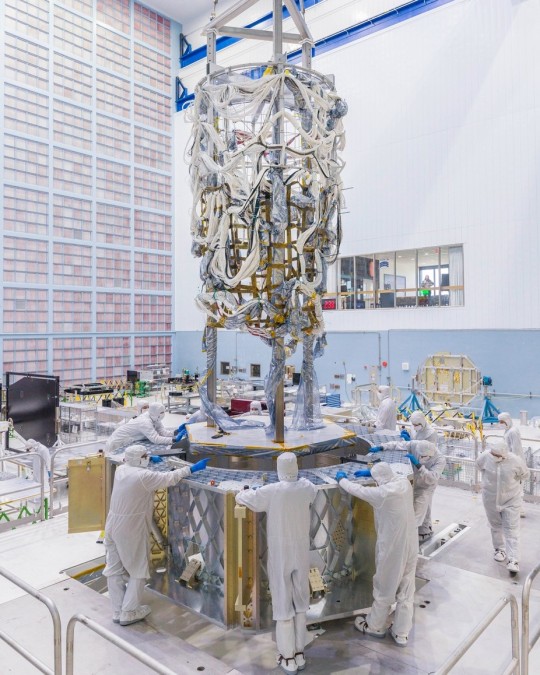
The Nancy Grace Roman Space Telescope’s flight harness is transferred from the mock-up structure to the spacecraft flight structure.
Your Body is Wired Like a NASA Space Telescope. Sort Of.
If our Nancy Grace Roman Space Telescope were alive, its nervous system would be the intricate wiring, or “harness,” that helps different parts of the observatory communicate with one another. Just like the human body sends information through nerves to function, Roman will send commands through this special harness to help achieve its mission: answering longstanding questions about dark energy, dark matter, and exoplanets, among other mind-bending cosmic queries.
Roman’s harness weighs around 1,000 pounds and is made of about 32,000 wires and 900 connectors. If those parts were laid out end-to-end, they would be 45 miles long from start to finish. Coincidentally, the human body’s nerves would span the same distance if lined up. That’s far enough to reach nearly three-fourths of the way to space, twice as far as a marathon, or eight times taller than Mount Everest!

An aerial view of the harness technicians working to secure Roman’s harness to the spacecraft flight structure.
Over a span of two years, 11 technicians spent time at the workbench and perched on ladders, cutting wire to length, carefully cleaning each component, and repeatedly connecting everything together.
Space is usually freezing cold, but spacecraft that are in direct sunlight can get incredibly hot. Roman’s harness went through the Space Environment Simulator – a massive thermal vacuum chamber – to expose the components to the temperatures they’ll experience in space. Technicians “baked” vapors out of the harness to make sure they won’t cause problems later in orbit.

Technicians work to secure Roman’s harness to the interior of the spacecraft flight structure. They are standing in the portion of the spacecraft bus where the propellant tanks will be mounted.
The next step is for engineers to weave the harness through the flight structure in Goddard’s big clean room, a space almost perfectly free of dust and other particles. This process will be ongoing until most of the spacecraft components are assembled. The Roman Space Telescope is set to launch by May 2027.
Learn more about the exciting science this mission will investigate on X and Facebook.
Make sure to follow us on Tumblr for your regular dose of space!
#NASA#astronomy#telescope#Roman Space Telescope#engineering#space hardware#dark energy#dark matter#space#technology#tech#universe
4K notes
·
View notes
Text
my roman empire is the fact that i thought "my roman empire" in internet slang meant that it was something you would defend to the very end/ death (because like historically that's kind of what happened right?) and not something a person thought about frequently...
#shu vs technology (つ╥﹏╥)つ#i was so confused for ages like why the roman empire out of all the empires?
12 notes
·
View notes
Text




The Roman Empire at present day, if it had not fallen. To view more of my Digital Creations, ❤️ my Instagram here: https://www.instagram.com/historythatneverhappened
#alternate history#roman literature#roman culture#roman#latin#ai generated#ai artwork#ai art#ai image#artificial intelligence#technology#machine learning
18 notes
·
View notes
Text
when did we learn about snapping fingers. in history
#ribbits#i dont know if the romans ever talked about that. doesnt seem like technology they would have had
10 notes
·
View notes
Text

APOSSIBLE
#APOSSIBLE#research initiative#technology#creativity#psychology#innovation#art#typography#type#typeface#font#ABC Simon#Neue Haas Unica#FK Roman Standard#Stardust#2024#Week 03#website#web design#inspire#inspiration#happywebdesign
12 notes
·
View notes
Text
My professor, expecting a normal and informative final exam (written)
Me:
Have you heard about our lord and saviour
Roman Concrete?
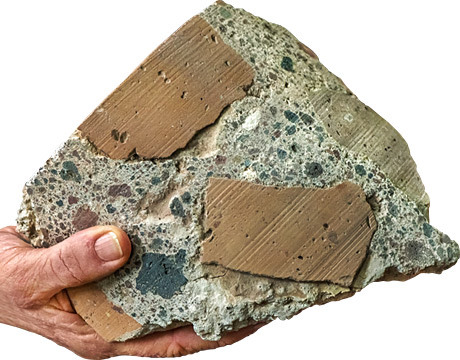
#so initially I thought I was writing a normal essay#but after I reviewed it I realized the WHOLE THING just a 1400 word testimate to Roman concrete#we got to pick our topics out of a list#and some how I ended up just picking all the ones that let me write about concrete#Roman concrete was half a lecture and I managed to relate it to damn near every other lecture in the course#what makes it even better is the final question was ‘what is the most important technological invention in the Greco Roman era’#and I think we all know what I put as the answer#roman concrete
10 notes
·
View notes
Text

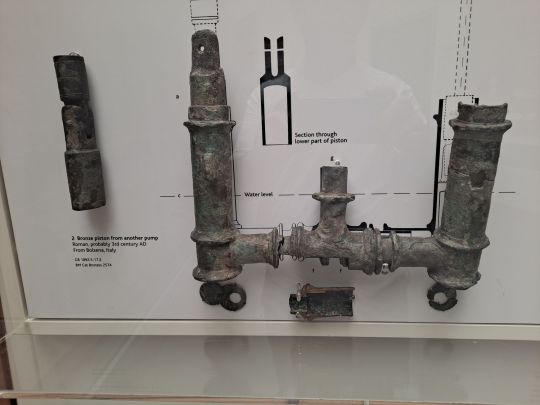
Roman water-pump
* Bolsena
* 3rd century CE
* British Museum
London, July 2022
#Roman engineering#water-pump#ancient Rome#Roman#technology#engineering#bronze#water#3rd century CE#Bolsena#British Museum#my photo#probably the most amazing item I saw in the museum#everyday life in antiquity
238 notes
·
View notes
Note
How often does Copperhead walk around the city? Does he go out and do normal person stuff (get groceries, go to the bank, etc)? If not how does he get around doing them? Is there anything he particularly enjoys doing when he's not at home?
send me questions you have about my character!

Not as often as he'd like! Being a snake metahuman makes it (un)surprisingly difficult being polite company; Copperhead is VERY distinctive looking and can only walk about without attracting attention at night, bundled up in his heaviest poncho. Getting groceries can be touch and go when you're wearing your hood up as people tend to think you're about to commit a robbery, which doesn't help people feel any less nervous when you're already a good 6'6 tall. It's too awkward, too dangerous to stand out so Copperhead tends to avoid the streets altogether, scaling buildings and traversing over rooftops instead of walking amongst the crowd.
Naturally this makes having a bank account difficult, especially when you're no longer recognizable as the person you once were - not that Copperhead had much to worry about there, he's effectively a non-entity what with having no birth record he knows of. As far as he (and the government is concerned), Copperhead never existed, or at least died at a young age so turning to crime was his only recourse in order to make a living. Doing a few favours here and there for various criminals across the states allowed him to make up some false identities, enabling him to amass funds untouched by authorities.
It's not easy but he's made it work, leaving an incredibly difficult trail to follow through various identities and false alias that go nowhere. Sure he might not be able to go to the bank but who needs to when you can get thousands per hit/heist? Why bother going out to get takeout when you can get it delivered and leave precise instructions as to where to pick up their (very) generous tip?
While it's occasionally lonely, Copperhead enjoys the relative solitude of his life. There's nothing quite like climbing to the top of the tallest building and looking out across the city, seeing a world of opportunity just waiting for somebody to come along and scoop it up. He watches and listens, ready to pounce on fortune before it slips from his claws.
#belost-the-watcher#memes ;; send me questions about my character#Thank you so much for sending this friend!#This was really enjoyable to think about and write#Since Copperhead has a completely different existence from that of Roman#Roman was a Rich Gotham Kid so had trust funds and shit and everybody knows who he is#On the other hand Copperhead was never a person at all#And looking as he does it makes things so much harder#Just steal shit to get by if there's nothing else you can do#However technology makes life a little easier and crime pays well since people don't care what you look like as long as you do a good job#And Copperhead is very very good at what he does#Not being able to walk the streets without attracting stares ande screaming is a small price to pay for that
9 notes
·
View notes
Text
Check out my new tablet!
Even comes with a stylus, and doesn’t need charging 😁
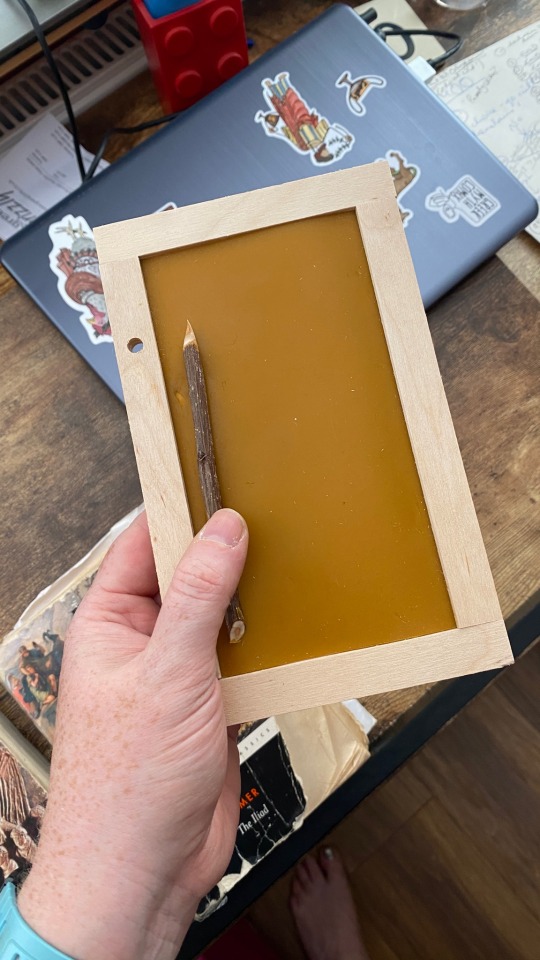
13 notes
·
View notes
Text
National Museums Scotland has just announced the extraordinary reconstruction of an 1,800-year-old Roman arm guard. The artifact has been described as “absolutely amazing.”
However, since its initial discovery within the Scottish Borders in 1906, the armor, shattered into over 100 pieces, languished in relative obscurity until experts meticulously reassembled it, much like a jigsaw puzzle.
This brass relic likely adorned a high-ranking Roman soldier, gleaming like gold on his arm. Currently on loan to the British Museum, you can find it at the upcoming exhibition "Legion: Life in the Roman Army" starting February 1, 2024!
#armor#Romans#Scottish Borders#Britannia#Scotland#Roman Military & Warfare#Roman Technology#ancient#history#ancient origins
38 notes
·
View notes
Text
Black Scientists and Engineers Past and Present Enable NASA Space Telescope
The Nancy Grace Roman Space Telescope is NASA’s next flagship astrophysics mission, set to launch by May 2027. We’re currently integrating parts of the spacecraft in the NASA Goddard Space Flight Center clean room.
Once Roman launches, it will allow astronomers to observe the universe like never before. In celebration of Black History Month, let’s get to know some Black scientists and engineers, past and present, whose contributions will allow Roman to make history.
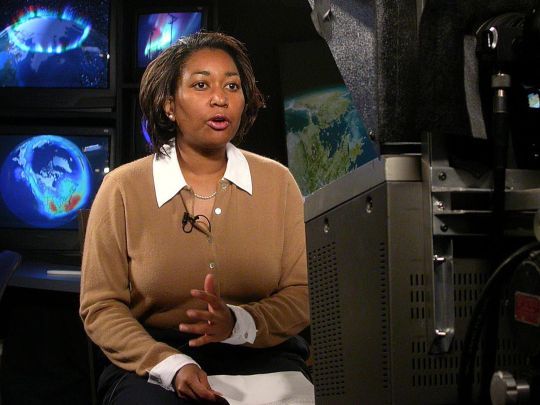
Dr. Beth Brown
The late Dr. Beth Brown worked at NASA Goddard as an astrophysicist. in 1998, Dr. Brown became the first Black American woman to earn a Ph.D. in astronomy at the University of Michigan. While at Goddard, Dr. Brown used data from two NASA X-ray missions – ROSAT (the ROentgen SATellite) and the Chandra X-ray Observatory – to study elliptical galaxies that she believed contained supermassive black holes.
With Roman’s wide field of view and fast survey speeds, astronomers will be able to expand the search for black holes that wander the galaxy without anything nearby to clue us into their presence.
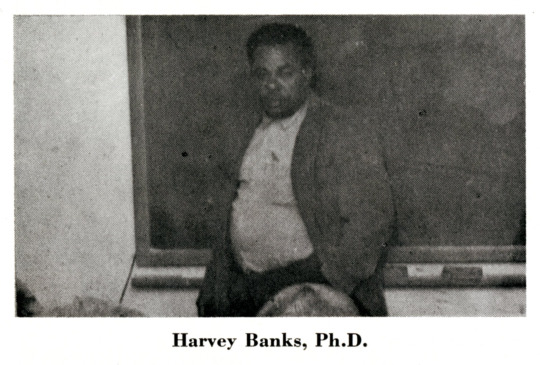
Dr. Harvey Washington Banks
In 1961, Dr. Harvey Washington Banks was the first Black American to graduate with a doctorate in astronomy. His research was on spectroscopy, the study of how light and matter interact, and his research helped advance our knowledge of the field. Roman will use spectroscopy to explore how dark energy is speeding up the universe's expansion.

NOTE - Sensitive technical details have been digitally obscured in this photograph.
Sheri Thorn
Aerospace engineer Sheri Thorn is ensuring Roman’s primary mirror will be protected from the Sun so we can capture the best images of deep space. Thorn works on the Deployable Aperture Cover, a large, soft shade known as a space blanket. It will be mounted to the top of the telescope in the stowed position and then deployed after launch. Thorn helped in the design phase and is now working on building the flight hardware before it goes to environmental testing and is integrated to the spacecraft.
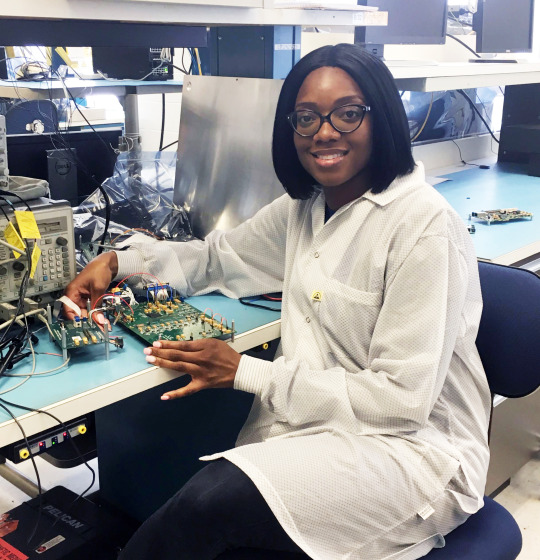
Sanetra Bailey
Roman will be orbiting a million miles away at the second Lagrange point, or L2. Staying updated on the telescope's status and health will be an integral part of keeping the mission running. Electronics engineer Sanetra Bailey is the person who is making sure that will happen. Bailey works on circuits that will act like the brains of the spacecraft, telling it how and where to move and relaying information about its status back down to Earth.
Learn more about Sanetra Bailey and her journey to NASA.
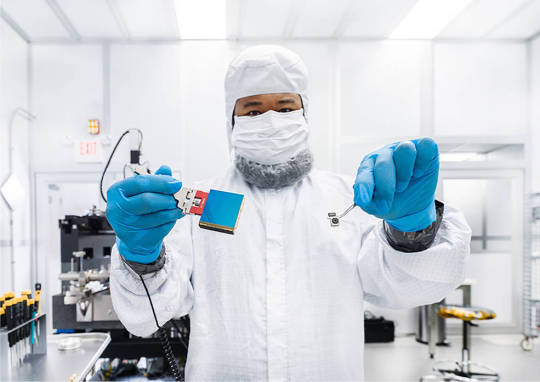
Dr. Gregory Mosby
Roman’s field of view will be at least 100 times larger than the Hubble Space Telescope's, even though the primary mirrors are the same size. What gives Roman the larger field of view are its 18 detectors. Dr. Gregory Mosby is one of the detector scientists on the Roman mission who helped select the flight detectors that will be our “eyes” to the universe.
Dr. Beth Brown, Dr. Harvey Washington Banks, Sheri Thorn, Sanetra Bailey, and Dr. Greg Mosby are just some of the many Black scientists and engineers in astrophysics who have and continue to pave the way for others in the field. The Roman Space Telescope team promises to continue to highlight those who came before us and those who are here now to truly appreciate the amazing science to come.

To stay up to date on the mission, check out our website and follow Roman on X and Facebook.
Make sure to follow us on Tumblr for your regular dose of space!
#NASA#astronomy#telescope#Roman Space Telescope#galaxies#black holes#space tech#astrophysics#spectroscopy#STEM#engineering#Black History Month#BlackExcellence365#science#tech#technology
2K notes
·
View notes
Text

Crosscut of the quinquereme, the warship that was ubiquitous in ancient navies. It had a set of three oars on each side, handled by five rowers, hence the name.
Contrary to the popular image of slaves rowing these ships, the majority of the rowers were free albeit poor citizens as it required skill and experience.
This particular quinquereme is equipped with the so-called "Corvus", a boarding device invented and employed by Romans to great effect in the First Punic War.
(Image Source: Ancient Warfare Magazine)
#ancient rome#ancient world#ancient civilizations#ancient culture#ancient greece#punic wars#corvus#warship#ancient warfare#the roman republic#military technology#ancient military#ancient warship
8 notes
·
View notes
Text
im just ughhhhhh

it's a toga. it's a toga/robe and theyre calling it a dress.

i can chalk it up to them not being of the 'original earth' or whatever but if theyre so proficient and well read as they claimed wouldnt they say it's unisex! both men and women wore chitons/togas!
#.txt#i hate this book but im at 80% i cant dnf it now#also i simply do not understand how the tech works#it's like wakanda rules but also completely backwards#there are super advanced tech with Completely New Metals!#but also theyre kinda struggling with technology and are at the same time completely rudimentary#like they have hovermobiles but they completely lack tech on say touch screens#i get it this was a cross of journey to atlantis and treasure planet#and a sprinkling of pride and prejudice#but it's boring#both the plot and the romance are dead#like#the p&p is both in my face and completely not there#also the main characters are super dumb#the relationships (ALL) arent good#the action is also so draggy#and that they made the yalvs seem like#idk ancient romans???? this is like the atlantian scene
2 notes
·
View notes
Text
We should have learned more about the middle east in school. A lot of the conflict going on today makes a lot more sense with the context of the Ottomans as more than just an enemy Europe had to fight for a while, but actually as a whole empire that got chopped up to serve western interests. We didn't even learn anything about it when being taught about WWI, which literally resulted in its dissolution!
#and this isn't even getting into the role of the islamic golden age in the transition between roman-era and modern technology and science#the history textbooks make it sound like it all just appeared fully formed in europe a few hundred years ago#but it actually goes a lot further back than that#hell they even had pinhole cameras a thousand years ago!
2 notes
·
View notes
Text
Lostech
For a clear example of how mere knowledge that something was once possible, surviving examples of a thing, or even partial records of production are of very limited benefit in rediscovering how to manufacture a lost technology, look no further than Roman concrete.
2 notes
·
View notes